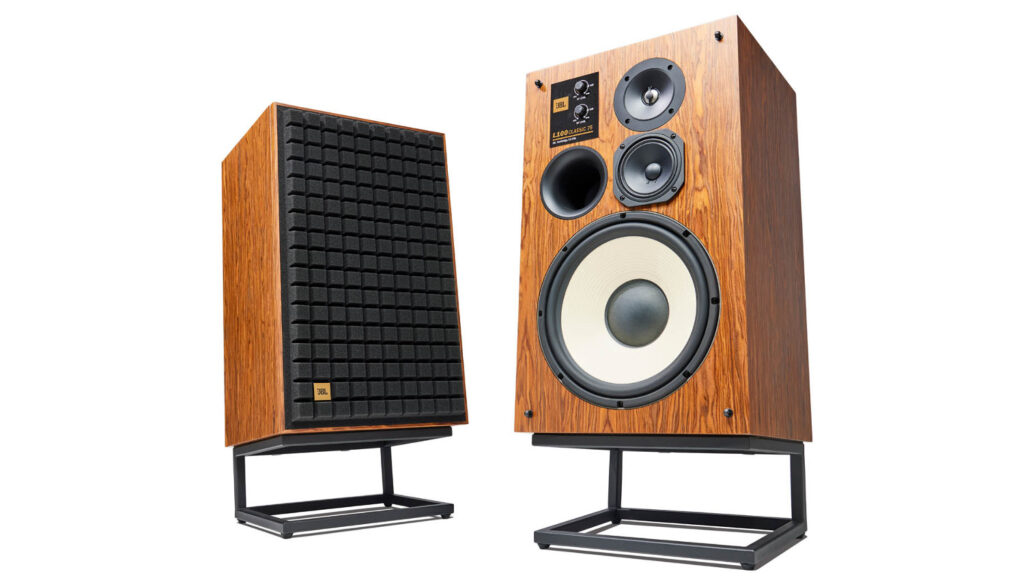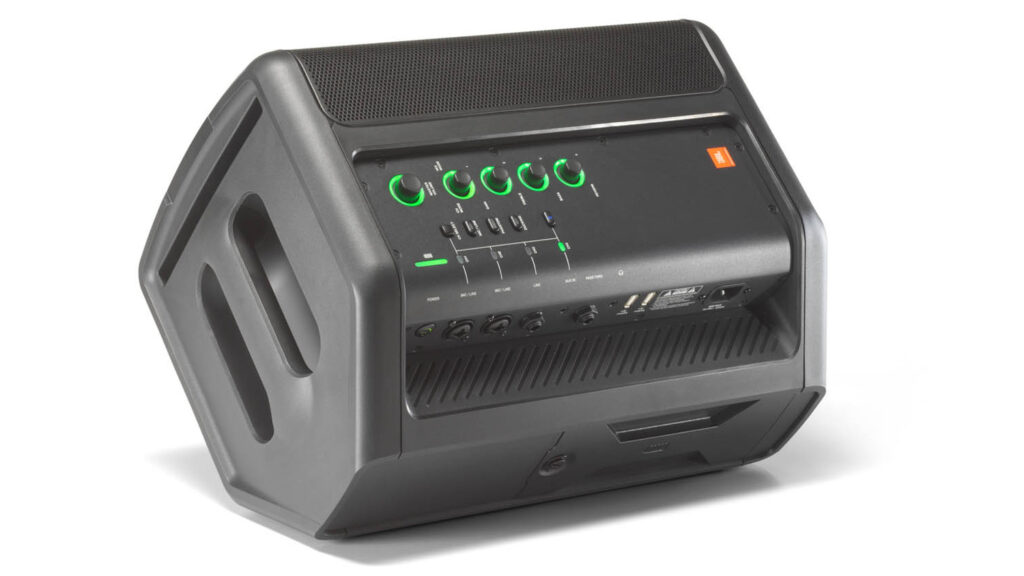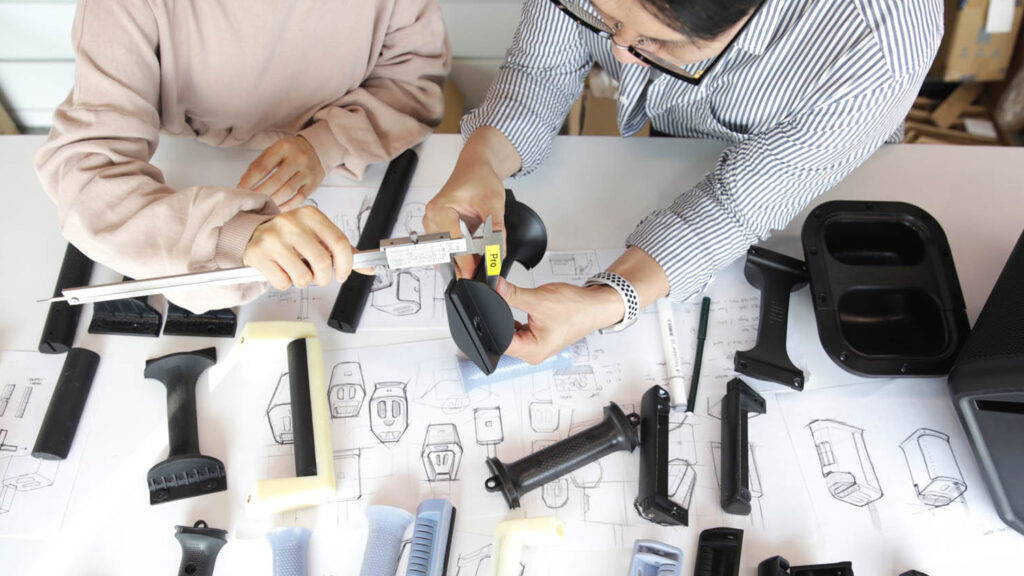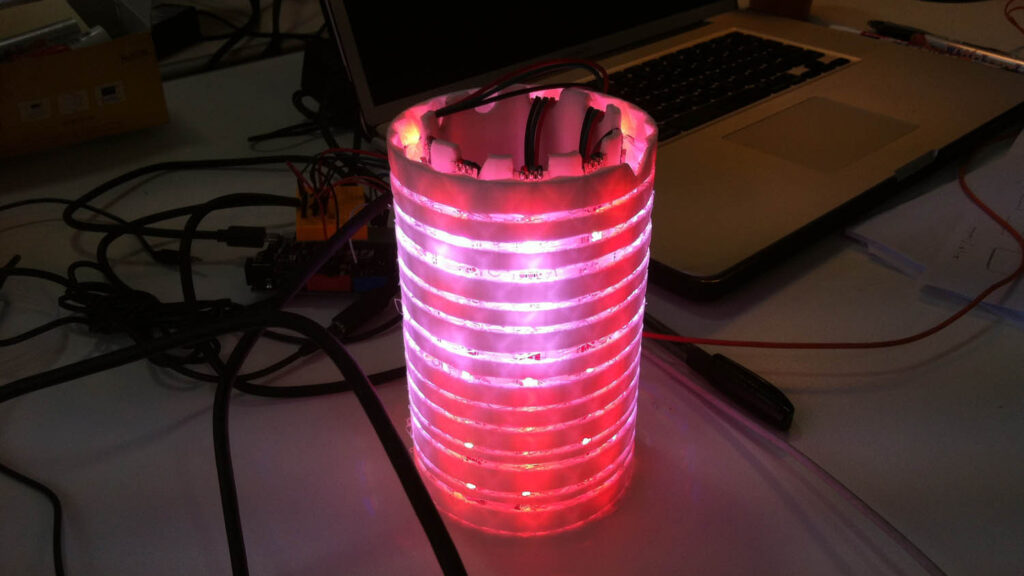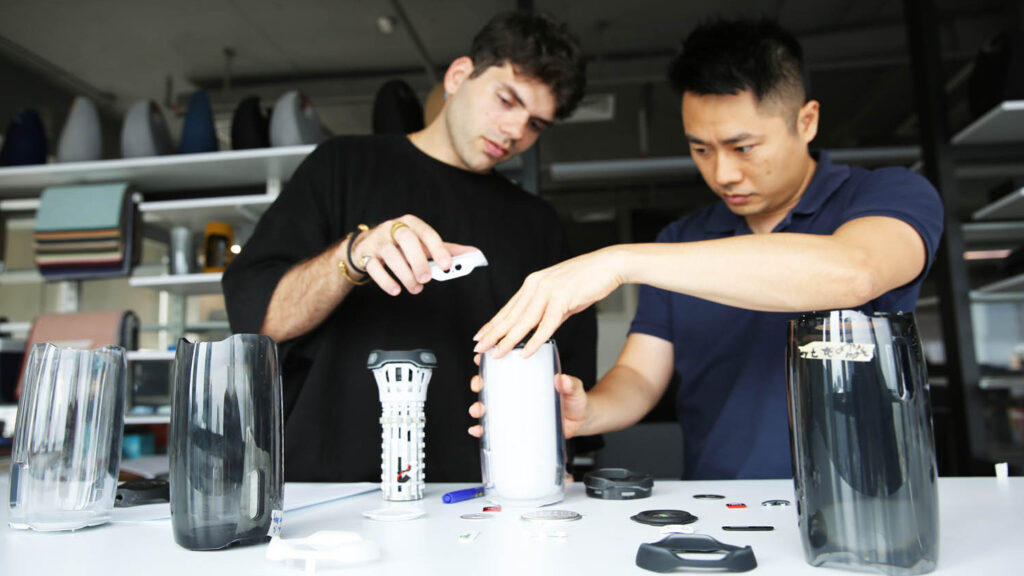Whether indoors or out, whether set to produce sounds that are exhilaratingly loud or mellow and intimate, every JBL product is designed to match the lifestyles of its users, as members of the company’s global design team tell Stephen Holmes
Relaxing with friends in the park, cycling to work, or hiking in the wilderness, music is now fully mobile, thanks to devices capable of going anywhere, producing quality sounds and fitting every lifestyle. That’s the ethos behind JBL, a brand with a 75-year heritage of producing audio products. These range from professional equipment capable of wowing huge stadium crowds to small Bluetooth speakers for personal use.
Ten years ago, JBL brought design in-house, creating its own global team to sharpen its focus on fast-paced, consumer-driven design. This team is based in five studios worldwide, with around 250 designers focusing variously on industrial design, user interface/experience (UI/UX), packaging, digital art and apps.
The overall goal, according to Damian Mackiewicz, JBL’s vice president of industrial design, is to create a holistic JBL experience. In other words, it’s about delivering the same brand experience across all products, “so that everything that we infuse this brand with somehow makes sense for the consumer, so that it feels natural.”
Bringing product design and development in-house immediately paid dividends for JBL. Products that would have required 36 to 48 months to reach the market could be delivered in 12 months, simply because major stakeholders in that process – product managers, marketing teams, designers and engineers – could regularly work things out around the same table.
As part of the move in-house, two major R&D centres were set up: one for consumer products in Shenzhen, China; and another for JBL’s professional range in Los Angeles, US.
Having an office in Shenzhen – an area renowned as a hotbed for parts development and manufacture – has also placed the JBL design at the heart of fast-paced electronics innovation.
“In Shenzhen, we can just go to the factory and see what’s going on,” says Mackiewicz. “To see what’s wrong with the tool, or even sometimes realise that the way it’s assembled takes too much time. It’s solving problems live, as they are happening.”
JBL – Brand experience
Mackiewicz explains that many of JBL’s products evolve from executive management team meetings. Here, everyone from across the company’s development groups is allowed to present their ideas to senior company executives.
“We have a ‘future experience team’ that is focusing on five years from now. The engineering team is focusing on the new technology that they see on the market. The designers are coming from the consumer side, analysing for example how the consumer is working today and what impact the pandemic is having on audio consumption.”
A big factor in deciding whether to take a concept further is how well it fits the brand’s overall personality. Parent company Harman International Industries has several big brand names in its portfolio. If a concept doesn’t fit for JBL, it might well be developed for another brand in the stable.
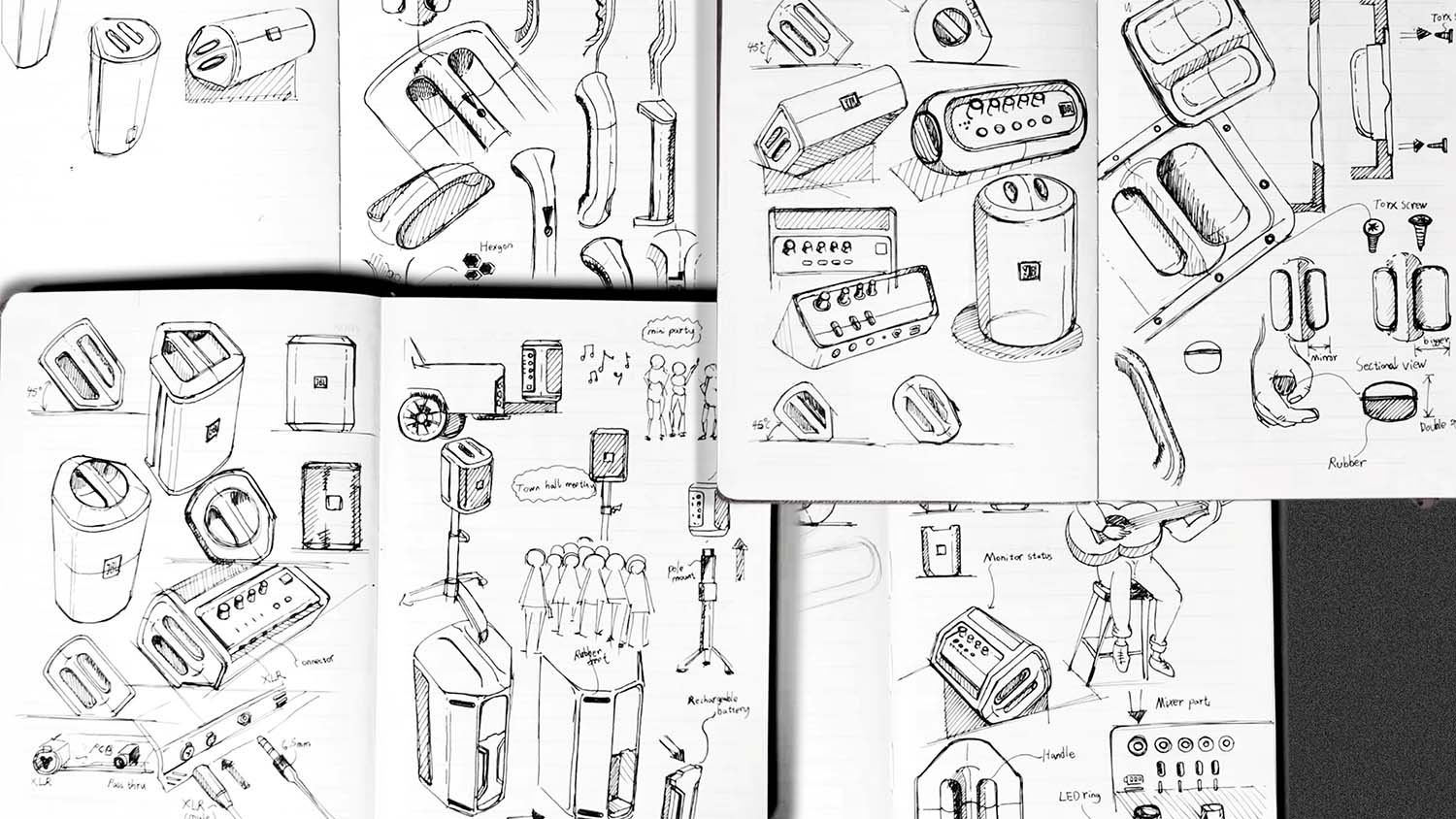
In presentations, anything goes, says Mackiewicz. There’s a big focus on pushing new ideas to the next level, by bringing them to life in as realistic a way as possible. Typically, this is done via Keyshot renders, but increasingly, the team is also using Unity for animations and augmented reality-based demos that give a clearer idea of how the products will look and work in the real world.
Other times, however, this process might be more last-minute, he says. “Sometimes an idea pops up the night before and you want to talk about it, so you do a little sketch!”
As the in-house design team grew, it became apparent to Mackiewicz that it needed to standardise on specific design tools, “because almost every month, there’s a new tool coming out that everybody would like to use.”
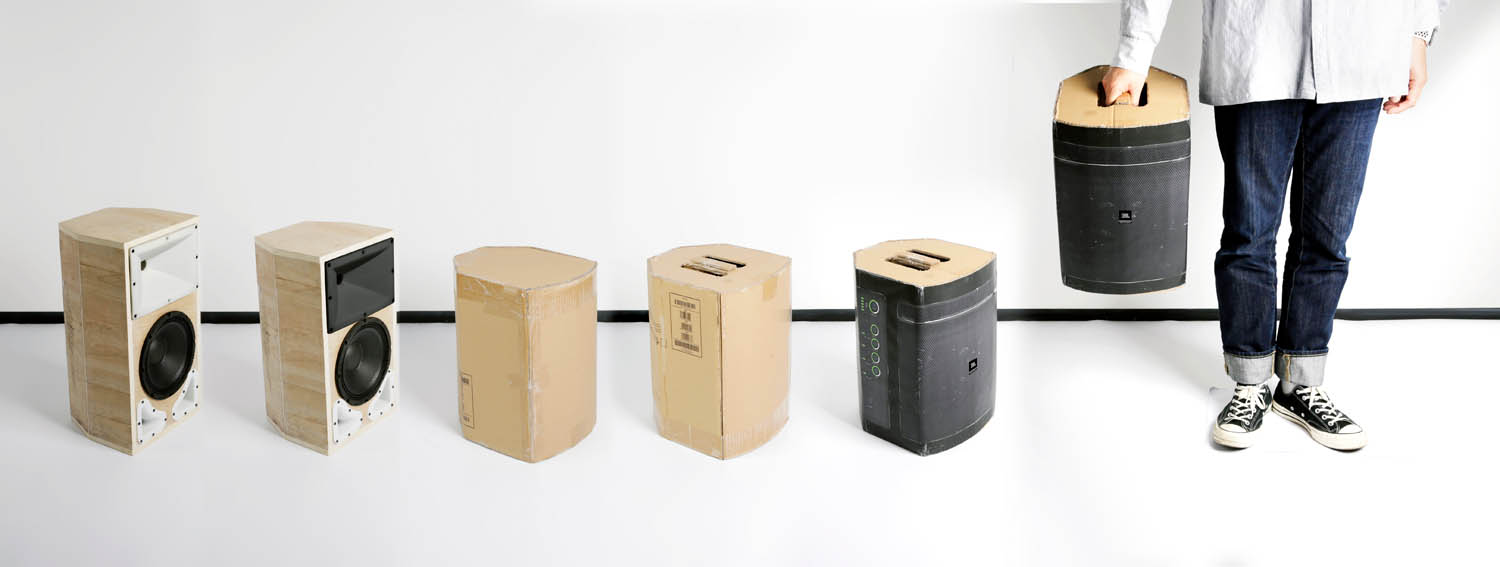
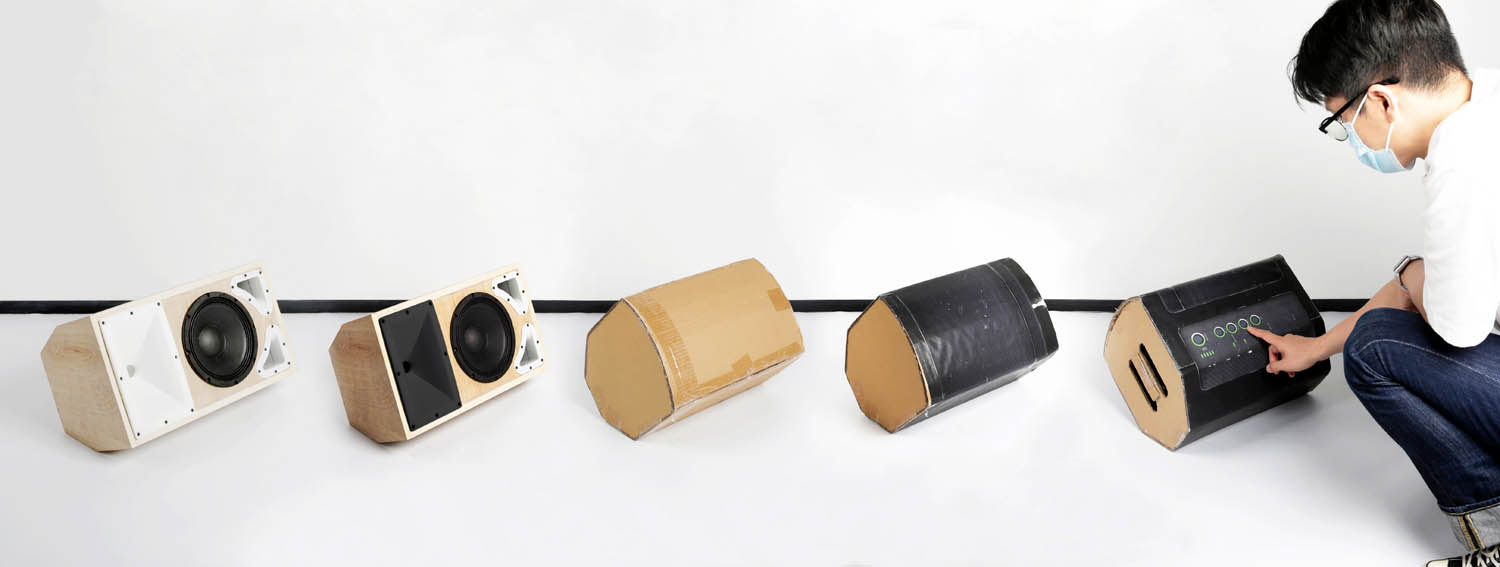
JBL – Toolset considerations
With that in mind, Rhino is the main CAD tool used across the design team at JBL. This suits the organic and freeform shapes of the company’s products, and the tool helps the team quickly explore 3D shapes that are far removed from the traditional black boxes of many audio brands. Rhino plug-ins such as Grasshopper are used to help design the speaker grilles that release the sound.
Industrial design director Alexander Demin explains that, in the past, this was limited to a punching process with just one pattern. “Nowadays, with parametric tools, we can control every single opening on the speaker grille and change the scale, size and particular shape of it,” he says.
That’s especially important when it comes to areas associated with performance and airflow. “At the same time, we can develop a very particular design signature on the speaker grille,” he adds.
KeyShot is used to make the designs for hard parts as realistic as possible. Fabric simulation also has a role, with JBL using Marvellous Designer to achieve the real-world material drape, stretch and pattern sizing that cover many of its speakers.
Product designers often work alongside animators in the same room, enabling them to communicate faster and bounce ideas off one another. “It helps to think about the story they will tell,” Mackiewicz explains. He reckons it’s the perfect way of launching a product: “It all happens in parallel, it makes sense talking to each other. At the same time, the packaging team is thinking about how they can tell the story the best way, too. Everyone is working to make this story happen.”
Outside the box
When JBL designed its first line of portable speakers, the brief was loose: design a small, medium and large speaker.
While most companies would take one design and scale it to make the design language consistent across the three sizes, Mackiewicz’s team had other ideas.
“What we took as a challenge was if a speaker is small and very light, what else can you do with it?” he says. “We really tried to analyse what we could do with a lightweight speaker, and we came up with the idea to clip it to a backpack. So it’s outside of your bag, it’s easier to carry, and we were really analysing the use case of each product.”
Colour plays an important role in distinguishing the products, although manufacturing limitations mean designers need to agree on around five colour choices.
“So how can you build a product where you don’t have to think about the colour, a product that is changing its colour, based on whatever you feel like in the morning? How does it adapt to you?” asks Mackiewicz.
As a way around this, the team developed Pulse, a compact speaker with a case of colour-changing LED lights. These can be adjusted to match the user’s mood or can dance in time with the music, creating a light show.
The bigger the speaker, the bigger the battery. Rather than try and downsize this element, the team decided to find positives, which is how they arrived at the idea of the JBL Charge, which can use its battery size to also connect and charge other mobile devices. For the even bigger Xtreme Bluetooth speaker, the team conceived of adding a shoulder strap to make it easier to carry.
“I remember the first time we presented this idea of wearing a speaker and everyone was looking at us: ‘It doesn’t make sense!’,” says Mackiewicz.
“It turns out the customers buying this product love it. And we are also very happy that we are working at a company where we can do these experiments and we can launch them. It’s not just designers working internally and dreaming about something.”
Prototyping is paramount
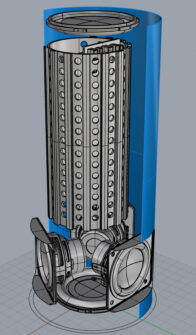
To verify initial ideas, the designers often start with card and paper mockups, in order to help them judge the dimensions and proportions of a proposed product, although of course, these often change as speaker components are assembled.
When these designs are intended for the professional series, the scale is much larger, so prototypes take on further roles. “We need to consider a lot of ergonomics of it, how it is going to be carried around, where to position the handles,” says Demin.
“There are sometimes vertical handles or handles on different sides, so you can manipulate the product, imagining you’re taking it from the truck to the floor, or mounting it and so on.”
The huge drivers used in the JBL professional line – monitors typically piled high at gigs or suspended on mounts on stages – add a lot of weight, which needs to be balanced to benefit the teams manually setting up the equipment.
“When those components are delivered from the factory, we place them in the dummy prototype, and it helps to verify the location of the handle. Maybe it needs a little shift to the left or right. Those kinds of details are crucial, and at each stage we work with the different components,” Demin says.
“That’s where 3D printing is playing a huge role, because we can generate a lot of different options for ergonomic grip handles and other details that can be quickly verified and implemented in the final product.”
JBL – Future challenges
Even with 75 years of experience in creating speakers of different sizes, for different audiences, the future looks certain to present new challenges for JBL.
In the professional space, the big test going forward will be to maintain high-quality sound, but package it into smaller, more lightweight forms. “This remains a challenge, as the physics remain and the rules of how acoustics work are not really changing with time,” says Demin.
“The user in the future would like to have bigger, stronger sounds, and at the same time more lightweight, compact, easy and ergonomic solutions, whether it’s the artist, the installer, or a regular consumer.”
On the consumer side, sustainability of products is the big concern. Rampant consumption and the subsequent consequences of millions of discarded electronic products are having a terrible effect on the planet.
“I think the biggest challenge for us as designers is how do you make sure people use your product for more than one year, without getting bored by it?” says Mackiewicz.
“It’s easy now to have 20 pairs of sneakers or 100 T-shirts, even if they don’t need them, so how do you make sure somebody falls in love with your product and uses it constantly?”
To appeal to JBL’s young, active audience, he adds, the company must continue to focus on the work of adding more to a speaker than just great sound: “A strap, a clip – it’s like there’s a second element to the speaker. And that’s what we’re always trying to achieve.”
Carried, clipped or simply perched on a shelf in the home, JBL looks set to add more to audio for a long time to come.

